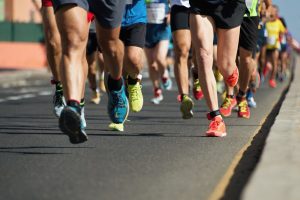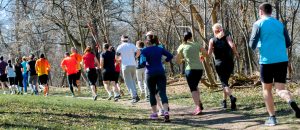In recent years, the mechanics of a golfer’s action have been studied and examined with great detail. As we approach the first round of the Masters in Augusta, I’ve taken some time to explore the risk factors and performance-based models which experts have been researching. I’ll be analysing their findings in relation to our own evidence from working with amateur and elite golfers in our clinics.
Note – this article will only cover the highlights of my thoughts (to avoid this reading more like a book!). For more detailed analysis or your mechanics, you can find me in our Leyburn Road clinic at Bedale Golf Club, Yorkshire.
According to the systematic review by Bourgain et al, 2022 (Sports | Free Full-Text | Golf Swing Biomechanics: A Systematic Review and Methodological Recommendations for Kinematics (mdpi.com)), studies have focused on X-factor, crunch factor, swing plane, kinematic sequence, and joint angular kinematics.
Understanding Golf Mechanics
Let’s break down the methodologies of golf mechanics to understand them a little more clearly, and explore how they could impact on injury, it’s symptoms and subsequent recovery.
Methodology | What is it? |
X-factor | The ability to move your body like a coiled spring. The further the thoracic (mid spine) rotates on the backswing in comparison to the hip position, the bigger the X-factor. |
Crunch factor | For right-handed golfers, this is the amount of right-side lateral flexion and anti-clockwise axial trunk (central column of your torso) rotation. The larger the angles, the higher the crunch factor. |
Swing plane | The arc on which the golf glub travels in relation to the player. Effected by posture, and angles of joints through the swing motion. |
Kinematic sequence | How energy is transferred from one area of the body to improve efficiency in creating power. |
Joint angle kinematics | The angle of each joint at certain points in the golf swing. This may be used in conjunction with X-factor and Crunch factor. |
Let’s also summarise these mechanics in relation to common symptoms and conditions we support in clinics using some of the methodology above when trying to predict injury and performance:
X-factor and Crunch factor
- Genetics play a huge role on an athlete’s ability to achieve high x-factor.
- The above methodology does not consider the historical training of the athlete.
- Research disputes either factor as a predictor of lower back pain.
- X-factor MAY have correlation to power, however, there are many factors that correlate with the ability, such as age, genetics and past injury.
Swing plane
- Another poor predictor of injury due to high levels of variables.
- Too many small nuances to break down to try and be specific about a specific injury.
- Research based around ‘minimalist’ golf swings often do not correlate with injury outcomes.
- Dynamic swing planes can improve power.
Kinematic sequence
- Hypothesised if sequencing is out, risk of injury is increased however, not proven.
- Hugely important in maximising power and performance.
- Cross over research from throwing, batting and club sport can help us understand golf in depth.
Joint angle kinematics
- Joint positional software varies highly depending on what technology you use.
- Often too many variables to make a study viable. Age, swing plane, weight, height, past injury, swing speed, kinematic sequence etc. Large sample sizes required.
- Possibility of being more specific about a joint position and its effect on injury and performance.
How Golf Mechanics Help You
Before we jump into how golf mechanics can help you – remember that elite golfers who spend thousands of hours working on their golf swing, kinematic sequence and have larger x-factors and crunch factors are more likely to have unilateral facet joint spondylosis (wearing of the small spinal joints at one side only). Or in other words, professional and high-level golfers will show more wear and tear on one side of their body.
Like in most sports, extreme repetitive motion may influence the physiology of our joints. This does not have an exact correlation to pain or injury. However, recreational golfers have fewer physiological changes despite struggling with pain.
Smith et al 2018 (Risk Factors Associated With Low Back Pain in Golfers: A Systematic Review and Meta-analysis – PMC (nih.gov)) found that higher BMI, age and past injury in adults were the main risk factors in adults, whilst low BMI golfers and taller juniors had higher risk factors for lower back pain.
The way we move when golfing has very little correlation with lower back pain.
Dom’s Top Tips
- Prepare your body for golf
It is an explosive sport that requires almost every muscle in your body to contract in some way in your action. We prepare by having appropriate baseline strength and mobility to cope with the forces you are putting it through. Get in the gym and start moving. A combination of resistance training and dynamic stretching is a great start.
- Add some drills to your training
Begin to develop quality kinematic sequencing (repetitive actions which strengthen your swing). This should consist of a load phase, a transition phase, recoil phase and release. Think about a baseball throw. A right-handed pitcher will load onto their right side (load), their left knee and hip will begin to externally rotate (transition), the right shoulder begins unloading and the arm and hand accelerates towards the target (recoil), and finally they release the ball (release).
These drills can be completed with medicine balls, resistance bands, kettlebells, and barbells. I recommend you work with a quality Strength and Conditioning coach to perform well.
- Plan your early season activity
Don’t start the season with lots of practice, especially if you have had past back injury or are otherwise sedentary. Come up with a schedule that slowly introduces you into golf postures. Something we often see is a new golfer spending lots of time at the range or on the putting green with zero prep or previous beck strengthening considered. Build up all areas of your game equally and start slowly.
Good golf mechanics may not always affect injury outcomes. But good conditioning and preparation will. Improved mechanics can help you become more explosive and statistically speaking lower your score. Take my tips on board to stay on the course longer, without injury and maintaining your performance levels.
Have a great golf season and let us know if you need any help!
Author: Dominic Moon, Pure Physio Sports Lead (North) and Specialist MSK Physiotherapist







